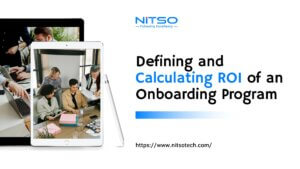In the fast-paced and ever-evolving business landscape of India, effective workforce management has become a crucial determinant of organizational success. With the country’s rapidly growing economy and dynamic talent pool, organizations are recognizing the strategic importance of leveraging data-driven insights to optimize their human capital investments. But the question remains: How can organizations measure and monitor the effectiveness of their HR practices to drive sustainable growth and competitive advantage?
The answer lies in the power of key HR metrics. These quantifiable measures provide invaluable insights into various aspects of an organization’s workforce, including recruitment, retention, performance, engagement, and development. By consistently measuring and analyzing these metrics, organizations can make informed decisions, identify areas for improvement, and implement targeted strategies to maximize the potential of their most valuable asset – their human capital.
According to a recent study by the Society for Human Resource Management (SHRM), organizations that effectively measure and manage key HR metrics experience improved employee engagement, higher productivity, and better overall business performance. Furthermore, a report by the Boston Consulting Group highlights that companies with strong HR analytics capabilities outperform their peers in terms of revenue growth and profitability.
In this comprehensive guide, we will explore 11 key HR metrics that every organization operating in India should measure and monitor closely. These metrics serve as powerful tools for understanding the effectiveness of HR practices, identifying potential issues, and implementing data-driven solutions to address them.
Content On This Page
11 Key HR Metrics to Track for Success
1. Cost per Hire
The cost per hire metric measures the average expenditure incurred by an organization to fill a vacant position. This metric encompasses a wide range of expenses, including advertising costs, agency fees, background checks, relocation expenses, and the time invested by recruiters and hiring managers throughout the entire recruitment process.
Calculating the cost per hire is relatively straightforward:
Cost per Hire = Total Recruitment Costs / Number of Hires
Monitoring this metric is crucial for organizations as it provides valuable insights into the efficiency and effectiveness of their recruitment strategies. A high cost per hire may indicate inefficiencies in the hiring process, excessive reliance on external agencies, or a competitive job market where attracting top talent is more challenging.
By analyzing the cost per hire metric, organizations can identify opportunities for process optimization, explore more cost-effective recruitment channels, and implement strategies to streamline the hiring process without compromising on the quality of candidates.
2. Human Capital Value Added (HCVA)
The Human Capital Value Added (HCVA) metric is a powerful tool for assessing the financial contribution of an organization’s workforce to its overall success. It measures the value created by employees in relation to the associated labor costs.
The HCVA calculation is as follows:
HCVA = Revenue – (Operating Costs – Labor Costs)
A positive HCVA indicates that the organization’s workforce is generating value that exceeds the associated labor costs, contributing to the company’s profitability and competitiveness.
Monitoring the HCVA metric is essential for organizations as it provides insights into the return on investment in human capital. A low or negative HCVA may signify inefficiencies in workforce utilization, suboptimal productivity levels, or misalignment between the workforce and the organization’s strategic objectives.
By analyzing the HCVA, organizations can identify areas for improvement in workforce planning, talent development, and performance management strategies. Additionally, it helps organizations make informed decisions regarding investments in employee training, compensation, and benefits, ensuring that they are optimizing their human capital resources for maximum value creation.
3. Time to Fill
The time to fill metric measures the average duration it takes an organization to fill an open position, from the initial job posting to the successful candidate’s acceptance of the offer. This metric is calculated as follows:
Time to Fill = Total Days to Fill All Positions / Total Number of Positions Filled
Monitoring the time to fill is crucial for several reasons. Prolonged vacancies can lead to productivity losses, increased workloads for existing employees, and potential disruptions to business operations. Additionally, a lengthy hiring process may result in losing desirable candidates to competitors with more efficient recruitment strategies.
By analyzing the time to fill metric, organizations can identify bottlenecks in their recruitment process, such as ineffective sourcing channels, cumbersome screening procedures, or delays in decision-making. Armed with this information, organizations can streamline their processes, optimize candidate experience, and implement strategies to reduce the time to fill, ultimately enhancing their ability to secure top talent in a timely manner.
4. Employee Turnover Rate
The employee turnover rate measures the percentage of employees who voluntarily or involuntarily leave an organization over a specific period of time. It is calculated as follows:
Employee Turnover Rate = (Number of Employees Who Left / Average Total Employees) x 100
A high employee turnover rate can be detrimental to an organization’s success, as it can lead to increased recruitment and training costs, disruptions in productivity, and potential loss of institutional knowledge and valuable skills.
By monitoring the employee turnover rate, organizations can gain insights into the effectiveness of their employee retention strategies, identify potential issues contributing to employee dissatisfaction or attrition, and implement targeted interventions to improve employee engagement and job satisfaction.
Analyzing turnover data can also reveal patterns or trends related to specific departments, job roles, or employee demographics, enabling organizations to address root causes more effectively. For instance, a high turnover rate among recent hires may indicate issues with the onboarding process or misaligned expectations, while high attrition among tenured employees could signal concerns with career growth opportunities or organizational culture.
5. Absenteeism Rate
The absenteeism rate measures the percentage of scheduled work time lost due to employee absences, excluding approved leave, such as vacations or medical leave. It is calculated as follows:
Absenteeism Rate = (Total Days Absent / Total Workdays) x 100
A high absenteeism rate can have significant implications for an organization’s productivity, operational efficiency, and overall performance. Excessive absenteeism can lead to project delays, increased workloads for remaining employees, decreased morale, and potential disruptions in customer service or product delivery.
By monitoring the absenteeism rate, organizations can identify patterns and potential root causes contributing to employee absences, such as workplace stress, health issues, or work-life balance challenges. Armed with this information, organizations can implement targeted interventions, such as wellness programs, flexible work arrangements, or improved workplace ergonomics, to address the underlying factors and reduce absenteeism.
6. Workforce Productivity
Workforce productivity is a measure of the output generated by an organization’s employees in relation to the resources or inputs utilized. While there are various methods to calculate workforce productivity, a common approach is to measure the revenue generated per employee or the value added per employee.
Workforce Productivity = Total Revenue / Total Number of Employees
or
Workforce Productivity = Value Added / Total Number of Employees
Monitoring workforce productivity is crucial for organizations as it provides insights into the efficiency and effectiveness of their human capital investments. A low workforce productivity metric may indicate issues such as inadequate training, inefficient processes, outdated technology, or misalignment between employee skills and organizational objectives.
By analyzing workforce productivity data, organizations can identify opportunities for process optimization, skill development initiatives, technology upgrades, or restructuring efforts to enhance efficiency and maximize the potential of their workforce. Additionally, comparing productivity metrics across departments or teams can reveal areas of excellence or areas requiring improvement, enabling organizations to replicate best practices or implement targeted interventions.
7. Employee Engagement Score
The employee engagement score measures the level of emotional and psychological commitment employees have towards their organization and its goals. It is typically assessed through employee surveys that evaluate factors such as job satisfaction, motivation, alignment with company values, and intent to stay with the organization.
Engaged employees are more likely to be productive, innovative, and committed to their work, ultimately contributing to the organization’s success. Conversely, disengaged employees may exhibit lower productivity, higher absenteeism, and increased turnover rates, which can negatively impact business performance.
By regularly measuring the employee engagement score, organizations can identify areas of strength and areas requiring improvement in their engagement strategies. This information can guide the development and implementation of targeted initiatives, such as improved communication channels, recognition programs, professional development opportunities, or cultural initiatives that foster a sense of belonging and alignment with organizational goals.
8. Employee Net Promoter Score (eNPS)
The employee net promoter score (eNPS) is a metric that measures employee loyalty and satisfaction by assessing their willingness to recommend the organization as a great place to work. It is calculated by asking employees a simple question: “On a scale of 0 to 10, how likely are you to recommend our organization as a great place to work?”
Employees are then classified into three categories based on their responses:
- Promoters (9-10 scores): Loyal and enthusiastic employees who actively promote the organization.
- Passives (7-8 scores): Satisfied but unenthusiastic employees who are vulnerable to competitive offers.
- Detractors (0-6 scores): Unhappy employees who may actively discourage others from joining the organization.
The eNPS is calculated by subtracting the percentage of detractors from the percentage of promoters.
eNPS = % Promoters – % Detractors
A high eNPS indicates a strong employer brand and a positive workplace culture, which can aid in attracting and retaining top talent. Conversely, a low eNPS may signal issues with employee satisfaction, engagement, or workplace culture, requiring corrective actions.
By regularly measuring and analyzing the eNPS, organizations can gain valuable insights into the overall employee experience and identify areas for improvement. This information can guide initiatives aimed at enhancing employee satisfaction, addressing concerns, and fostering a positive workplace culture that encourages employees to become brand ambassadors for the organization.
9. Training Effectiveness
The training effectiveness metric measures the extent to which training programs successfully impart the intended knowledge, skills, and behaviors to participants. It evaluates the impact of training on employee performance, productivity, and overall organizational outcomes.
Assessing training effectiveness typically involves a multi-dimensional approach, including:
- Participant feedback: Gathering feedback from trainees through surveys or assessments to evaluate their perception of the training’s relevance, quality, and applicability.
- Knowledge and skill assessments: Conduct pre and post-training assessments to measure the acquisition of new knowledge and skills.
- Performance evaluation: Monitoring the on-the-job application of the learned skills and their impact on individual and organizational performance indicators.
- Business impact analysis: Evaluating the broader organizational outcomes, such as increased productivity, improved customer satisfaction, or enhanced operational efficiency, resulting from the training initiatives.
By consistently measuring training effectiveness, organizations can identify areas for improvement in their learning and development programs, optimize resource allocation, and ensure alignment between training objectives and business goals.
10. Return on Investment (ROI) for Training
The return on investment (ROI) for training metric quantifies the financial benefits derived from training initiatives in relation to the costs incurred. It provides a tangible measure of the value and impact of learning and development investments on the organization’s bottom line.
Calculating the ROI for training typically involves the following steps:
- Identifying the benefits: Quantifying the measurable benefits resulting from the training program, such as increased productivity, reduced errors, improved customer retention, or increased sales.
- Calculating the costs: Determining the total costs associated with the training initiative, including direct costs (e.g., program fees, materials, facilitator expenses) and indirect costs (e.g., employee time away from work, travel expenses).
- Calculating the ROI: Applying the formula: ROI = (Benefits – Costs) / Costs x 100%
A positive ROI indicates that the financial benefits derived from the training initiative outweigh the associated costs, demonstrating a favorable return on investment.
By measuring and analyzing the ROI for training, organizations can make informed decisions about resource allocation, prioritize high-impact training programs, and justify learning and development investments to stakeholders. Additionally, this metric helps organizations identify training initiatives that may require further optimization or restructuring to maximize their impact and return on investment.
11. Diversity Ratio
The diversity ratio measures the representation of different demographic groups within an organization’s workforce in relation to the available talent pool or the broader population. It is typically calculated for various diversity dimensions, such as gender, race, ethnicity, age, or disability status.
The diversity ratio can be calculated using the following formula:
Diversity Ratio = (Representation of a Specific Demographic Group in the Workforce / Representation of the Same Demographic Group in the Available Talent Pool or Broader Population) x 100%
A diversity ratio of 100% indicates that the representation of a particular demographic group in the workforce is proportionate to its availability in the relevant talent pool or population. Values below or above 100% suggest under-representation or over-representation, respectively.
By regularly measuring and analyzing the diversity ratio, organizations can identify potential disparities or imbalances in their workforce composition and take proactive steps to address them. This may involve implementing targeted recruitment strategies, fostering an inclusive workplace culture, providing diversity and inclusion training, or implementing policies and practices that promote equitable opportunities for all employees.
Monitoring the diversity ratio across different levels of the organization (e.g., entry-level, management, executive) can also reveal potential barriers or challenges faced by underrepresented groups in advancing their careers within the company.
In addition to the diversity ratio, organizations may also consider tracking other metrics related to diversity and inclusion, such as:
- Employee satisfaction and engagement scores among different demographic groups, to identify potential disparities in employee experiences.
- Promotion and advancement rates across different demographic groups, to assess equitable career growth opportunities.
- Retention rates for underrepresented groups, to identify potential challenges in creating an inclusive and supportive work environment.
By prioritizing diversity and inclusion metrics, organizations can not only foster a more equitable and inclusive workplace but also tap into the vast potential of a diverse workforce. A diverse and inclusive workforce can drive innovation, enhance problem-solving capabilities, and better reflect the diverse perspectives and experiences of customers and stakeholders, ultimately contributing to the organization’s long-term success and competitiveness.
Conclusion
In today’s dynamic and competitive business landscape, effectively measuring and managing key HR metrics has become an indispensable practice for organizations seeking to optimize their workforce, drive operational excellence, and achieve long-term success. By prioritizing the 11 key HR metrics outlined in this guide, organizations can unlock the true potential of their human capital, foster a culture of continuous improvement, and ultimately gain a sustainable competitive advantage.
From cost optimization and recruitment efficiency to employee engagement, productivity, and inclusivity, these metrics provide invaluable insights that guide informed decision-making and enable organizations to tailor their HR strategies to meet their unique needs and challenges.
It is important to remember that measuring these metrics is just the first step; the true value lies in how organizations interpret and leverage the data to drive meaningful change. By fostering a data-driven culture, organizations can cultivate a workforce that is engaged, productive, and aligned with the organization’s strategic objectives, ultimately contributing to sustainable growth and profitability.
As the Indian business landscape continues to evolve, organizations that prioritize the measurement and optimization of key HR metrics will be well-positioned to attract and retain top talent, nurture a high-performance culture, and stay ahead of the competition in the race for talent and market dominance.
Frequently Asked Questions (FAQs)
Why is it important for organizations to measure HR metrics?
Measuring HR metrics provides data-driven insights into various aspects of workforce management, enabling organizations to make informed decisions, identify areas for improvement, and optimize their human capital investments.
What are some of the key cost-related HR metrics?
Two important cost-related metrics are Cost per Hire, which measures the average expenditure incurred to fill a vacant position, and Human Capital Value Added (HCVA), which assesses the financial contribution of an organization’s workforce.
How can recruitment and retention metrics help organizations?
Metrics like Time to Fill and Employee Turnover Rate provide valuable insights into the efficiency of recruitment processes and the effectiveness of retention strategies, allowing organizations to address potential issues and improve talent acquisition and retention efforts.
Why should organizations measure employee engagement and satisfaction?
Measuring employee engagement and satisfaction through metrics like Employee Engagement Score and Employee Net Promoter Score (eNPS) helps organizations identify areas for improving employee experiences, fostering a positive workplace culture, and enhancing employee loyalty and advocacy.
What are the benefits of tracking learning and development metrics?
Metrics such as Training Effectiveness and Return on Investment (ROI) for Training help organizations assess the impact and value of their learning and development initiatives, enabling them to optimize resource allocation and align training programs with business goals.
How can diversity and inclusion metrics contribute to organizational success?
Measuring the Diversity Ratio across different demographic groups helps organizations identify potential disparities in workforce representation and take proactive steps to foster an inclusive and equitable workplace environment, tapping into the benefits of a diverse and engaged workforce.
How can organizations effectively utilize the insights from HR metrics?
Organizations should adopt a data-driven approach, consistently measure and analyze the relevant HR metrics, and use the insights to implement targeted strategies for improvement. Regularly monitoring these metrics and making data-informed decisions can drive positive change and contribute to long-term organizational success.
What are the challenges in measuring and managing HR metrics?
Potential challenges include data quality and availability, resistance to change, lack of analytical capabilities, and difficulty in establishing clear linkages between HR metrics and business outcomes. Addressing these challenges through robust data systems, change management, and cross-functional collaboration is essential.
Article you might be interested in Calculating ROI of an Onboarding Program








0 Comments